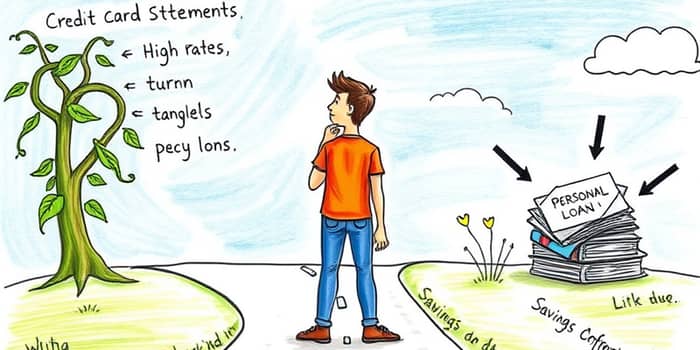
In the maze of financial options, personal loans can offer a clear path when used wisely. Whether you face mounting credit card balances or unexpected medical bills, understanding when to borrow—and how to secure favorable terms—can transform stress into empowerment.
Personal loans are unsecured loans with fixed payments offered by banks, credit unions, and online lenders. Unlike mortgages or auto loans, they don’t require collateral, making them accessible for borrowers without assets to pledge. You receive a lump sum and repay it in fixed monthly installments over a term, usually one to five years.
Interest is charged as a percentage of the principal, reflected in an annual percentage rate (APR). Aside from interest, lenders may charge origination fees—typically 1%–8% of the loan amount—that affect your overall cost. Understanding every component of your loan offer—from APR to fees—ensures you know the true price of borrowing.
When wielded strategically, a personal loan can be a powerful financial tool. Consider these scenarios:
In each case, compare the personal loan’s APR against your current rate. If you can secure a rate substantially lower than credit cards or other high-interest debt, a loan may save you thousands in interest.
As of mid-2025, the average personal loan APR nationwide stands at 20.78%. However, rates vary widely based on lender type, creditworthiness, and term length. At the low end, select borrowers can find rates starting at 5.99% APR, while the highest rates approach 30% or more.
Comparing offers is crucial. Below is a snapshot of sample APR ranges from leading lenders:
Online lenders often boast rapid funding—sometimes same-day—while banks and credit unions may take several days. Prequalification lets you explore these ranges without impacting your credit score, so you can identify the most affordable path.
Your interest rate hinges on several variables. Chief among them is your credit score: higher scores unlock lower rates, often dipping into the single digits for prime borrowers. Equally important is your debt-to-income ratio, which signals whether you can manage new monthly payments responsibly.
Loan terms also play a role. Shorter terms typically yield lower APRs but higher monthly payments, while longer terms spread costs out but increase total interest paid. Origination fees can add 1%–8% to your loan’s cost, so opt for lenders with minimal or no fees whenever possible.
Finally, existing relationships matter. Many banks offer discounts for loyal customers or those who enroll in autopay, shaving off up to 0.25% from the APR.
With the right strategy, you can minimize total interest paid and access funds on favorable terms:
While personal loans often outshine credit cards for large expenses, alternatives do exist. Balance transfer credit cards can offer 0% introductory APRs, though fees and rate hikes post-introductory period pose risks. Home equity loans or lines of credit deliver lower rates but require your home as collateral, amplifying potential losses.
Borrowing from family or friends avoids interest but may strain relationships. Always assess each option’s true cost—both financial and personal—before deciding.
Ultimately, the best loan is one that aligns with your financial goals. By understanding when personal loans make sense and employing targeted tactics to secure the most competitive rates, you can turn borrowing into an opportunity for progress rather than a burden.
Embark on your financial journey with clarity, armed with knowledge of current rates, lender comparisons, and actionable strategies. With mindful planning and disciplined repayment, a personal loan can be a stepping stone to lasting financial stability and growth.
References













